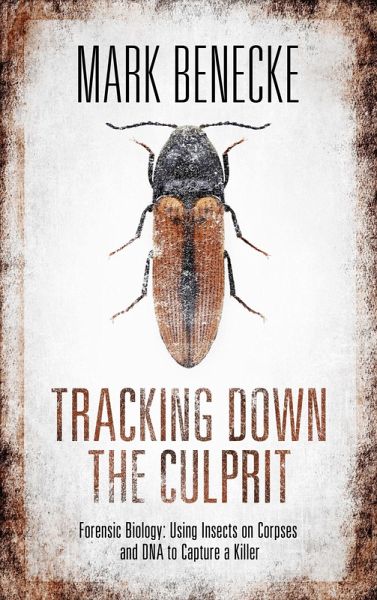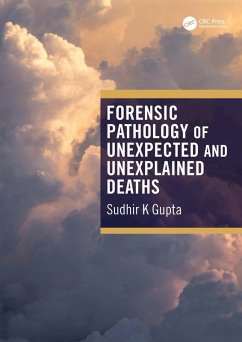
Tracking down the Culprit (eBook, ePUB)

PAYBACK Punkte
0 °P sammeln!
Blow fly maggots feast on moist, fresh cadaver tissue. Skin beetles prefer to feed on dried-out skin and hair. Cheese fly larvae graze on the corpse only when it turns to mush. Just what do these critters have to tell us about the carcasses they consume?In sometimes gruesome but factual detail, forensic scientist Dr. Mark Benecke delves into the digestive tracts of bugs on dead bodies.While forensic medicine focuses on determining cause of death; criminal biology seeks to locate the actual offender. DNA typing (genetic fingerprinting)-coupled with the analysis of insects on bodies, offender tr...
Blow fly maggots feast on moist, fresh cadaver tissue. Skin beetles prefer to feed on dried-out skin and hair. Cheese fly larvae graze on the corpse only when it turns to mush. Just what do these critters have to tell us about the carcasses they consume?
In sometimes gruesome but factual detail, forensic scientist Dr. Mark Benecke delves into the digestive tracts of bugs on dead bodies.
While forensic medicine focuses on determining cause of death; criminal biology seeks to locate the actual offender. DNA typing (genetic fingerprinting)-coupled with the analysis of insects on bodies, offender traces, and findings at the crime scene-make this scientific discipline key to uncovering clues not seen by the naked eye.
Benecke explains how criminal biology works and explores the question of why DNA typing is safer than any previous such identification method. But why does it unsettle so many people?
In an era when true-crime tales such as "Serial" and "Making a Murderer" continue to fascinate audiences, Benecke weaves historical detail into today's conversation. Hitler's skewed perception of genetics. Nazis abuse of science as an excuse to murder. Benecke pulls back the curtain to reveal the uncomfortable side-effects of DNA research and the uncanny techniques investigators can use when tracking down the culprit.
In sometimes gruesome but factual detail, forensic scientist Dr. Mark Benecke delves into the digestive tracts of bugs on dead bodies.
While forensic medicine focuses on determining cause of death; criminal biology seeks to locate the actual offender. DNA typing (genetic fingerprinting)-coupled with the analysis of insects on bodies, offender traces, and findings at the crime scene-make this scientific discipline key to uncovering clues not seen by the naked eye.
Benecke explains how criminal biology works and explores the question of why DNA typing is safer than any previous such identification method. But why does it unsettle so many people?
In an era when true-crime tales such as "Serial" and "Making a Murderer" continue to fascinate audiences, Benecke weaves historical detail into today's conversation. Hitler's skewed perception of genetics. Nazis abuse of science as an excuse to murder. Benecke pulls back the curtain to reveal the uncomfortable side-effects of DNA research and the uncanny techniques investigators can use when tracking down the culprit.
Dieser Download kann aus rechtlichen Gründen nur mit Rechnungsadresse in A, B, BG, CY, CZ, D, DK, EW, E, FIN, F, GR, HR, H, IRL, I, LT, L, LR, M, NL, PL, P, R, S, SLO, SK ausgeliefert werden.













